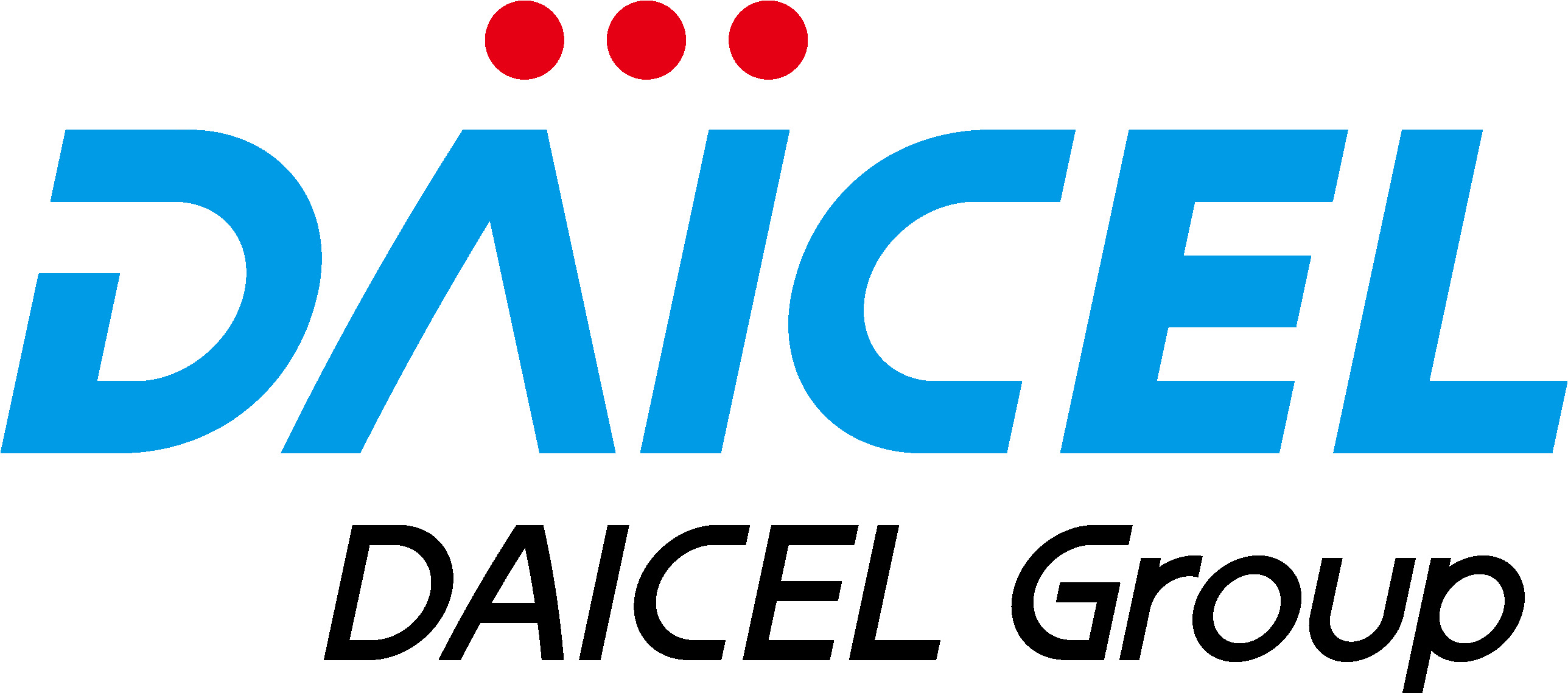Environmental Impact Reduction Activities
– Environmental Protection Promotion In Local Community –
Air and Water Pollution Prevention
At the Fuji Plant, we perform continuous monitoring and regulatory compliance for the followings in order to prevent environmental pollution caused by air pollution substances or waste water generated from plant.
Nitrogen oxide (NOx) emissions
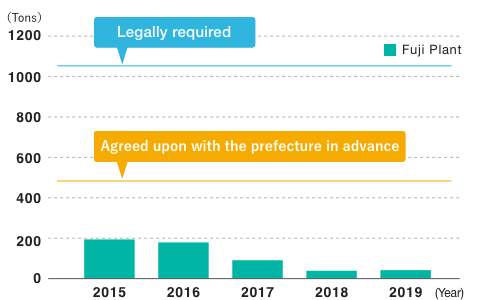
Sulfur oxide (SOx) emissions
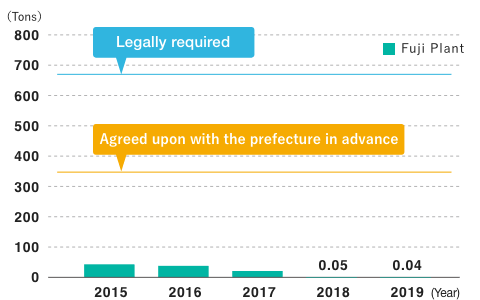
Smoke and dust emissions
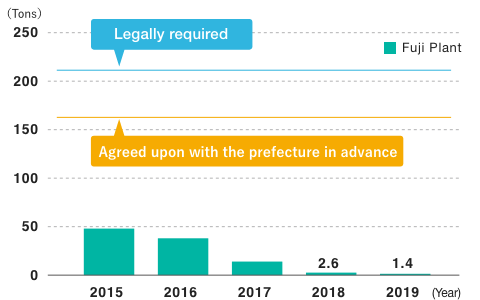
Chemical oxygen demand of plant drainage water
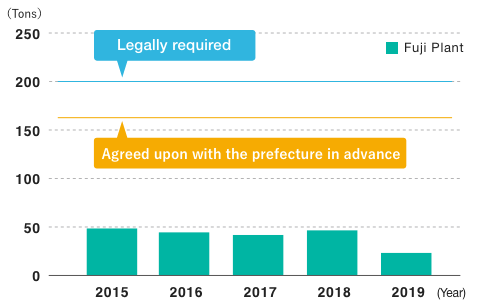
Green Logistics
The Fuji plant is actively working with logistics companies to reduce CO2 emissions generated from products transportation processes. For example, it is reducing environmental impact by switching to marine and rail transport, transportation routes optimization, etc.
In terms of transportation energy efficiency, despite the specific energy consumption index value*1 for FY2019 being 100.9% compared with FY2018, it is nevertheless 56.3% below the index value for FY2006, which is the year that these activities were begun. Also, CO2 emissions from logistics processes decreased 7% compared with FY2018.
*1 Specific energy consumption index value = Energy consumption (crude oil equivalent in kl) / Product sales volume
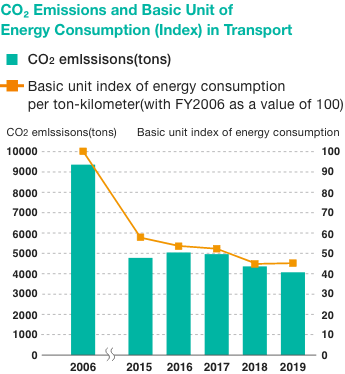
Major CO2 Emissions Reduction Initiatives
-
 Shift to low environmental load transportation methods
Shift to low environmental load transportation methods
(modal shift) -
 Transportation route optimization
Transportation route optimization -
 Increased truck loading efficiency
Increased truck loading efficiency -
 Encouraging driving practices that lower emissions
Encouraging driving practices that lower emissions
Activity Topics
Shortening transportation distances by trucks within Japan
through situation-specific optimization of transportation routes and methods
We have revised our transportation routes in light of the increased volume of products coming into the Port of Shimizu in Shizuoka Prefecture, which are then transported by truck to our main warehouses throughout Japan. We have shortened the distance that products are transported by truck by first having them transported by ship to the nearest port, either the Port of Tokyo or the Port of Osaka, depending upon the volume of demand within each region.
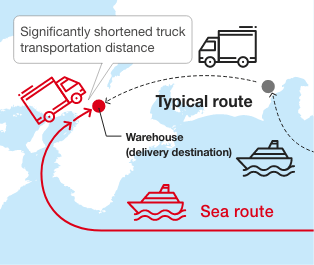
Example of shortened transportation route


